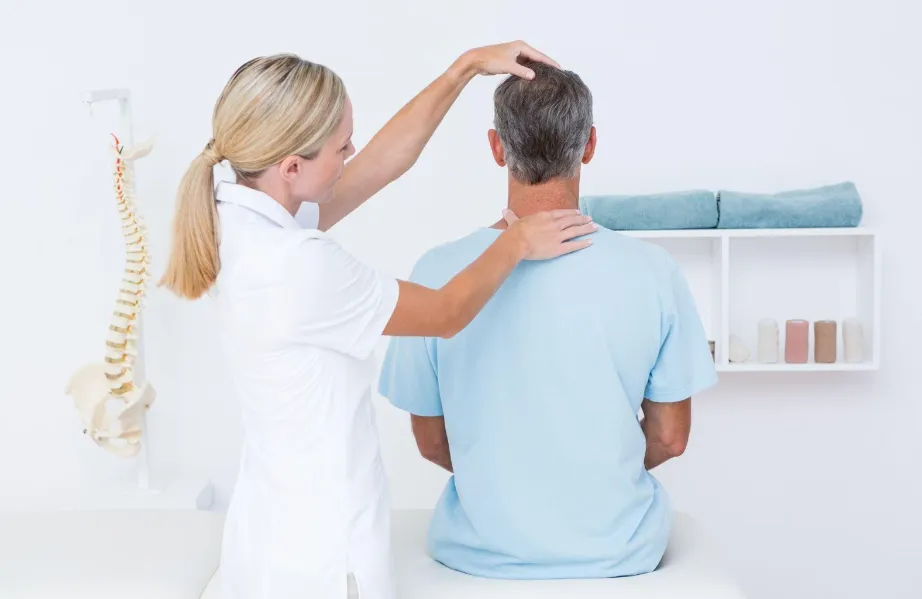Prolonged sitting can strain the muscles and joints in the lower back, leading to discomfort and pain. It can influence a person’s quality of life by reducing movement and creating discomfort.
Read on to understand how to fix lower back pain from sitting.
Understanding Lower Back Pain
Learning about back pain and exploring its root causes and symptoms can help you treat it better. Studies show that a sedentary lifestyle and abnormal resting positions are two leading causes of pain. It can also be a symptom of progressive disc illness, damaged ligaments, muscle strains, slipped discs, and spinal narrowing.
Lower back pain may appear mild, but it can sometimes be unbearable. Some individuals may encounter symptoms such as muscle stiffness, cramps, limited range of motion, or discomfort that radiates down the legs. If you face significant back pain, advice from a qualified medical practitioner can help you get an accurate diagnosis.
Diagnosis of Lower Back Pain
When diagnosing back pain, a healthcare specialist will gather information about the patient’s symptoms and medical history. They often conduct a thorough physical examination and may order diagnostic imaging tests such as X-rays, MRI scans, or CT scans. These imaging techniques help visualize the spine’s structures and identify abnormalities or injuries.
Additionally, they can employ specialized diagnostic procedures like discography or electromyography (EMG) to gather more information about the specific cause of lower back pain.
Exploring Early Treatment Options
Treating lower back pain from sitting involves a multimodal approach that targets pain relief, muscle strengthening, and postural correction. Treatment options may include:
Ergonomic Modifications
Adjusting your workspace ergonomics can make a significant difference. Ensure your chair provides proper lumbar support, your desk is at a suitable height, and your computer monitor is at eye level.
Heat or Cold Therapy
Applying heat or cold packs to the affected area can help relieve pain and reduce inflammation. Experiment with both methods to determine which provides more relief for you.
Massage Therapy
Regular massage can help relax tense muscles and improve blood circulation, promoting healing and reducing lower back pain.
Acupuncture
This ancient practice involves the insertion of thin needles into specific points on the body. In addition to providing pain relief, it improves your overall well-being.
Exercises
Incorporating stretches and exercises can strengthen your lower back and alleviate pain. The plank exercise, for example, targets core muscles, while the bird dog exercise works on stability and balance. The arch exercise provides a simple yet effective stretch for the lower back. Make sure to perform these exercises with proper form and technique, gradually increasing intensity and seeking guidance from healthcare professionals if needed.
Medical Treatment Options
Depending on the individual’s condition and needs, doctors may recommend various treatments for chronic and severe lower back pain. Here are some standard treatment options:
Physical Therapy
A physical therapist will work with you to develop a personalized exercise program that focuses on strengthening the muscles supporting your back. These targeted exercises help improve flexibility, correct posture, and enhance overall spinal stability. Physical therapy may also include other modalities, such as ultrasound therapy or electrical stimulation, to relieve pain and promote healing.
Nerve Blockers and Steroid Injections
In some cases, doctors may suggest nerve blockers or steroid injections to help alleviate severe pain and inflammation. Nerve blockers, such as local anesthetics, are injected near specific nerves to block pain signals temporarily. Steroid injections, conversely, deliver corticosteroids directly into the affected area to reduce inflammation and provide longer-lasting pain relief.
Laser Therapy
Laser therapy uses low-level laser or light energy to reduce inflammation, increase blood flow, and stimulate tissue repair. These therapies may offer pain relief without the need for surgery or medications.
Medications
Medication can help with lower back pain, but doctors usually use it with other therapies. Your doctor may prescribe muscle relaxants to lessen muscular spasms and encourage relaxation. In some circumstances, they can also prescribe over-the-counter or prescription analgesics, such as nonsteroidal anti-inflammatory medications (NSAIDs), to relieve pain and reduce inflammation.
Lower back pain from sitting can be disruptive and affect the overall quality of life. Are you an Arkansas native seeking professional health specialists to diagnose and treat your lower back pain? Arkansas Spine and Pain’s skillful doctors have the experience and quality to help you recover. Contact us at 501-988-3473 to learn more.

